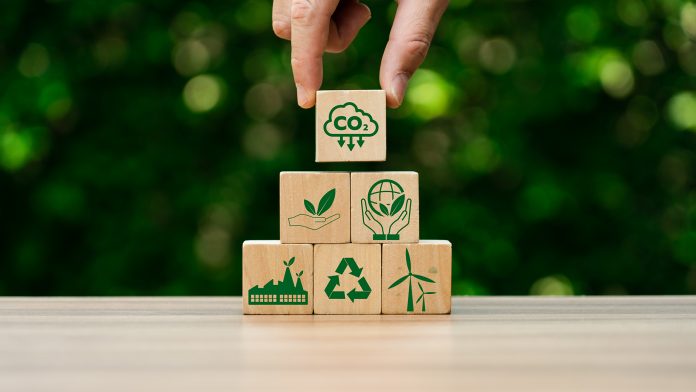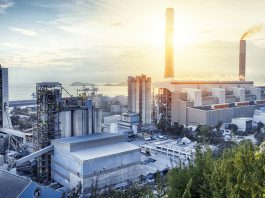Researchers from the University of Tokyo and Nagoya University in Japan have developed a method to confirm where carbon in concrete originates from.
The method sets to verify carbon capture in concrete, looking at whether the carbon comes from the raw materials or from carbon in the air which has been trapped when it reacts with the concrete.
The team measured the ratio of certain carbon isotopes in concrete that had been exposed to air and concrete that hadn’t. They discovered that direct air carbon capture in concrete had occurred.
The team’s method could be used by countries around the globe that aim to offset their carbon emissions.
Why is carbon capture important?
With rice crops wilting across Japan and roads melting in the US, 2023 is on the path to becoming the hottest year on record. Despite international calls to action, greenhouse gas emissions from fossil fuels continue to increase.
To prevent reaching the critical threshold of a 2°C temperature rise by 2100, more needs to be done.
According to the United Nation’s Intergovernmental Panel on Climate Change, reducing further emissions is simply not enough.
Carbon dioxide must also be removed from the atmosphere to hit this target to counteract climate change.
Cement has a high environmental burden
Direct air capture (DAC) pulls carbon dioxide from the air via physical processes or chemicals.
The International Energy Agency include the use of DAC technologies as part of their net zero emissions scenario.
According to the IEA, in 2022, industry was responsible for a quarter of global energy system carbon dioxide emissions.
After water, cement is the second-most widely used industrial product, and it comes with a high environmental impact.
Professor Ippei Maruyama from the Department of Architecture at the University of Tokyo Graduate School of Engineering, said: “As much as 800 kilograms of CO2 is emitted per ton of cement during its production, so reducing emissions has become a significant issue in the concrete industry.
“Concrete has long been known to react with CO2 in the air to form calcium carbonate, an undesirable phenomenon because it induces corrosion of the steel bars inside concrete structures. However, the concrete industry is now considering ways to make effective use of this reaction.”
Verifying carbon capture in concrete
The reaction causes calcium carbonate to trap CO2, removing the gas from the atmosphere. In addition to this, calcium carbonate is found naturally in rocks such as limestone, which are used in concrete manufacturing.
“This makes it difficult to distinguish whether or not CO2 identified in concrete has been freshly extracted from the air or comes from rocks,” said Maruyama.
“So we developed a method to verify this, which could be used to determine whether the concrete produced can be certified as offsetting CO2 emissions.”
The team’s method
The team hydrated cement pastes samples as a concrete replica. They then ground the paste into powder, keeping the non-exposed powder contained and leaving the exposed powder open to the air.
The team dissolved the powder in acid to collect the gas after a number of days. They then used a technique called accelerator mass spectrometry to analyse the ratio of several carbon isotopes, in particular, carbon-12, carbon-13, and carbon-14.
This allowed the team to analyse whether the carbon came from carbon capture or was already present in the raw materials. This is because the carbon ratios reflected the known proportion of carbon isotopes in the air at the time the gas was sealed.
Applying the method to real-world scenarios
The team now want to apply the carbon capture in cement verification method to real-world scenarios to test how the varied quantities of raw materials used in local concrete production may affect results.
“Fixing carbon dioxide from the air is certified as an act of offsetting CO2 emissions, so it is economically valuable in terms of emissions trading. Digging up calcium carbonate for use in concrete is not, so the distinction is very important, and this research can help to support a healthy market,” concluded Maruyama.
“We believe that the carbon neutrality and a circular economy in the construction industry are essential to our future, particularly in Japan where this industry has a role in supporting business continuity and recovery from natural disasters.”









